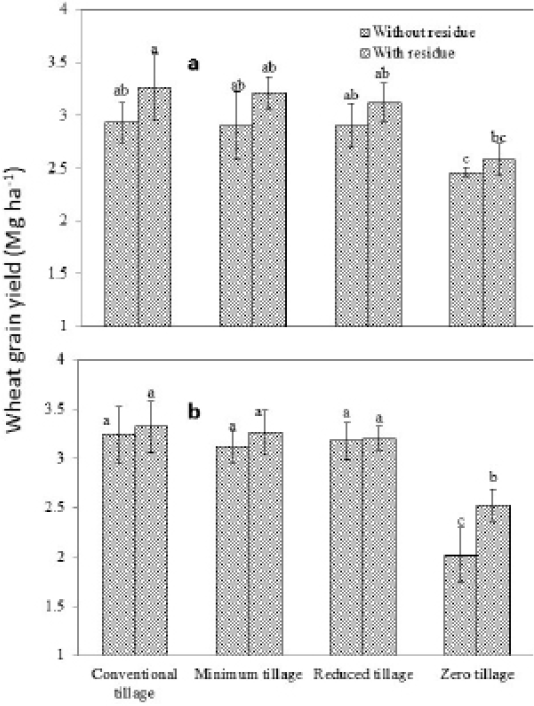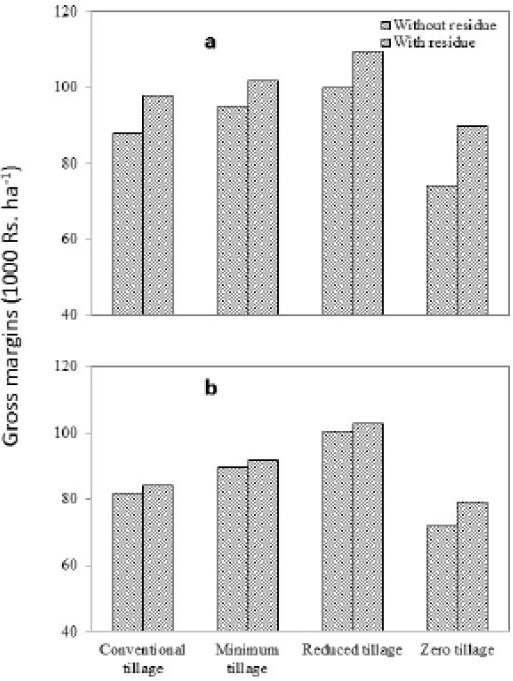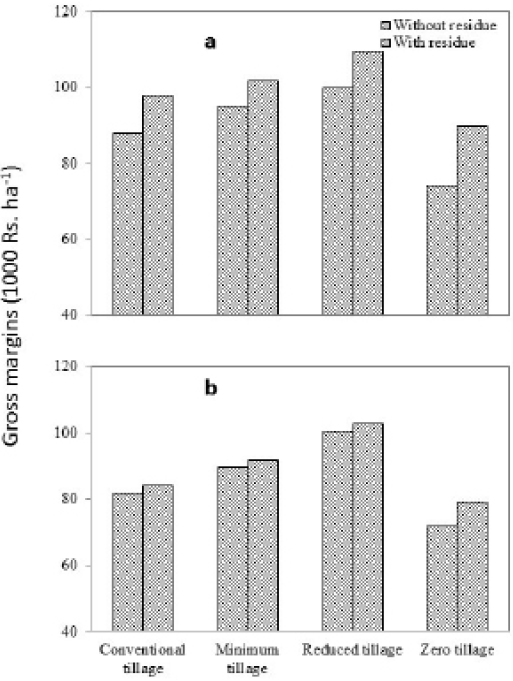Evaluation of Conservation Tillage System Performance for Rainfed Wheat Production in upland of Pakistan
Evaluation of Conservation Tillage System Performance for Rainfed Wheat Production in upland of Pakistan
Muhammad Sharif1*, Shahzada Sohail Ijaz2, Muhammad Ansar3, Ijaz Ahmad4 and Syed Abdul Sadiq5
Monthly rainfall and mean maximum and minimum temperature during experimental period.
Seedling emergence under the tillage treatements with and without crop residue for the two years: (a) 2012-13, (b) 2013-14 was low under zero tillage without retention of crop residues.
Wheat biomass under the tillage treatements with and without crop residue for the two years: (a) 2012-13, (b) 2013-14 was low under zero tillage without retention of cropresidues.
Wheat grain yield under the tillage treatements with and without crop residue for the two years: (a) 2012-13, (b) 2013-14 was low under zero tillage without retention of crop residues.
Wheat crop harvest index under the tillage treatements with and without crop residue for the two years: (a) 2012-13, (b) 2013-14 was not effected by different tillage systems and residues management.
Gross marginal return under the tillage treatements with and without crop residue for the two years: (a) 2012-13, (b) 2013-14 was low under zero tillage with and without crop residues.
Efficiency coefficient under the tillage treatements with and without crop residue for the two years: (a) 2012-13, (b) 2013-14 was higher under reduced tillage and zero tillage withand without crop residues.













